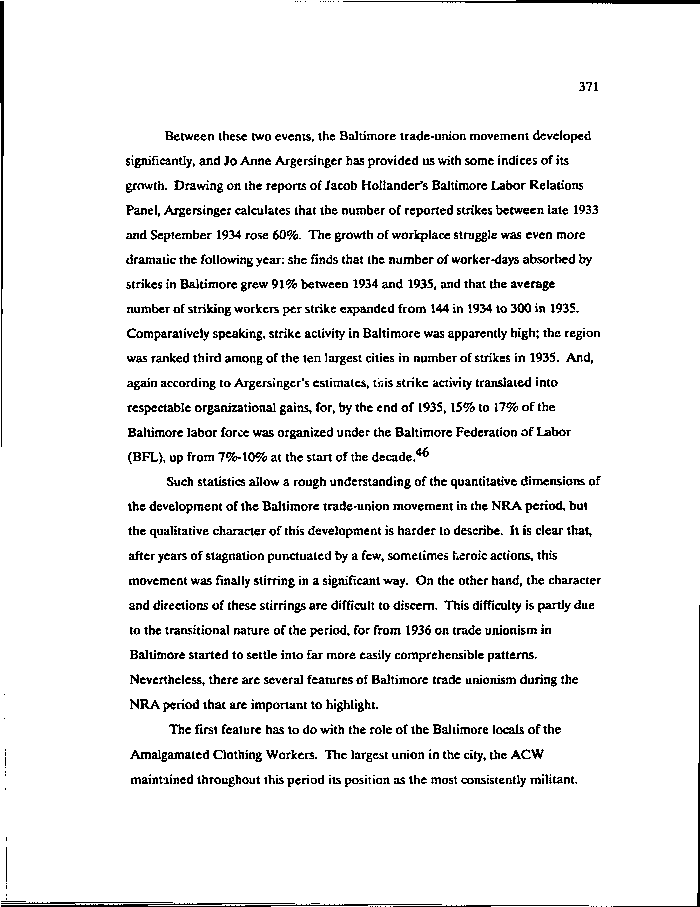|
371
Between these two events, the Baltimore trade-union movement developed
significantly, and Jo Anne Argersinger has provided us with some indices of its
growth. Drawing on the reports of Jacob Hollander's Baltimore Labor Relations
Panel, Argersinger calculates that the number of reported strikes between late 1933
and September 1934 rose 60%. The growth of workplace struggle was even more
dramatic the following year: she finds that the number of worker-days absorbed by
strikes in Baltimore grew 91% between 1934 and 1935, and that the average
number of striking workers per strike expanded from 144 in 1934 to 300 in 1935.
Comparatively speaking, strike activity in Baltimore was apparently high; the region
was ranked third among of the ten largest cities in number of strikes in 1935. And,
again according to Argersinger's estimates, this strike activity translated into
respectable organizational gains, for, by the end of 1935,15% to 17% of the
Baltimore labor force was organized under the Baltimore Federation of Labor
(BFL), up from 7%-10% at the start of the decade.46
Such statistics allow a rough understanding of the quantitative dimensions of
the development of the Baltimore trade-union movement in the NRA period, but
the qualitative character of this development is harder to describe. It is clear that,
after years of stagnation punctuated by a few, sometimes heroic actions, this
movement was finally stirring in a significant way. On the other hand, the character
and directions of these stirrings are difficult to discern. This difficulty is partly due
to the transitional nature of the period, for from 1936 on trade unionism in
Baltimore started to settle into far more easily comprehensible patterns.
Nevertheless, there are several features of Baltimore trade unionism during the
NRA period that are important to highlight.
The first feature has to do with the role of the Baltimore locals of the
Amalgamated Clothing Workers. The largest union in the city, the ACW
maintained throughout this period its position as the most consistently militant.
|

